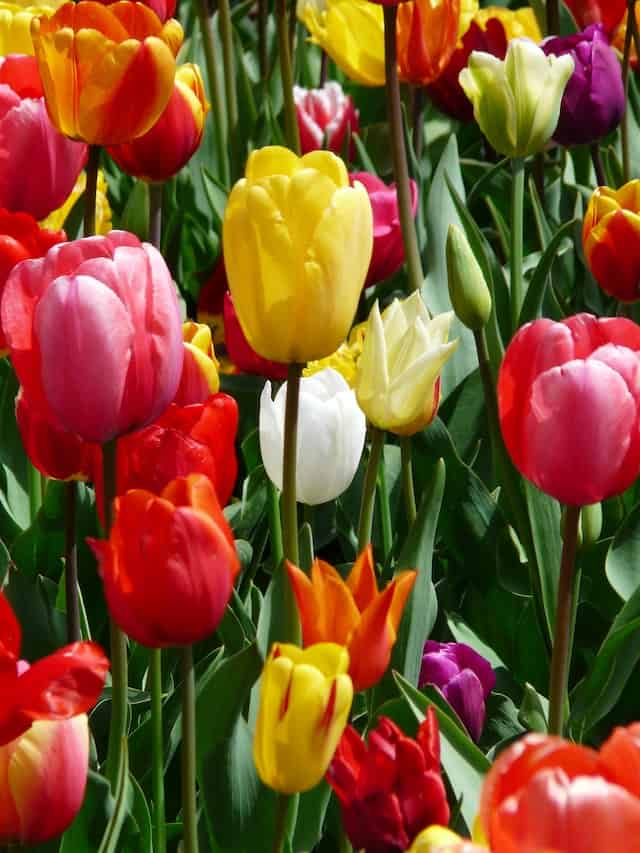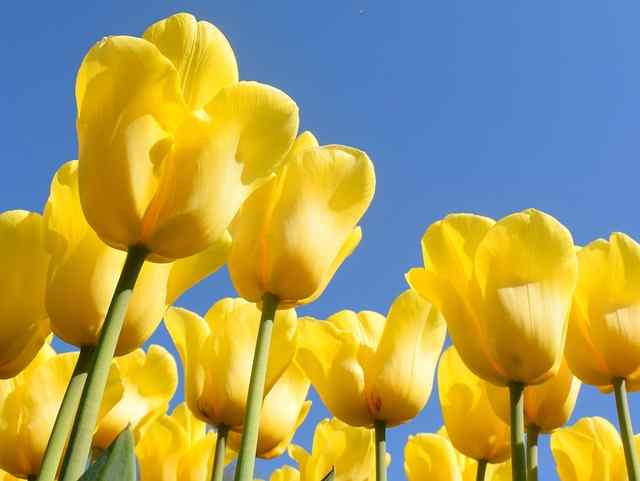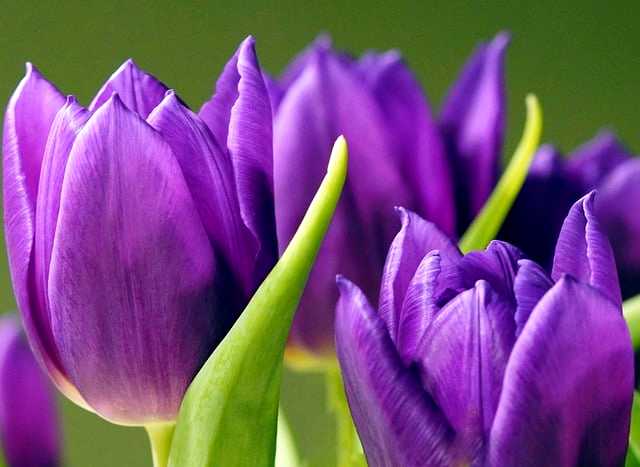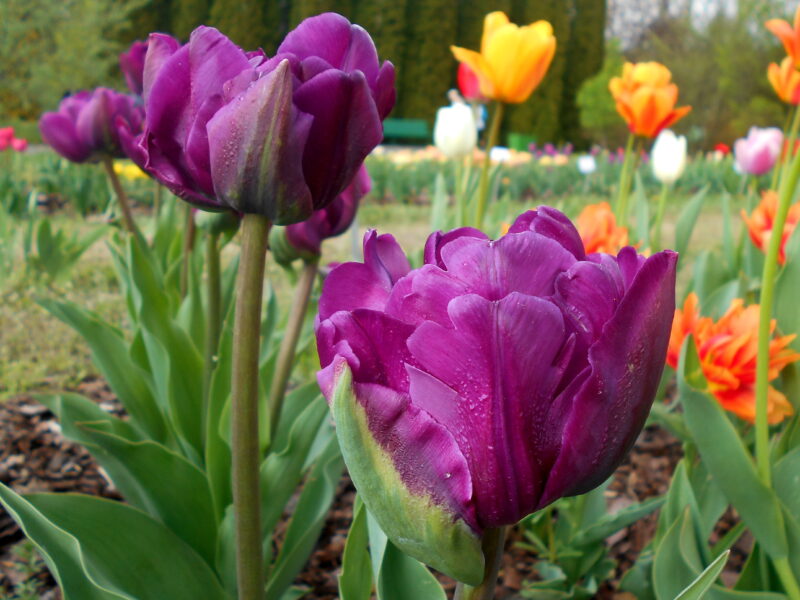In this detailed guide, we’ll explore everything you need to know about when to plant tulips, ensuring that you’ll enjoy a beautiful display come spring.
Understanding Tulip Life Cycles

Before diving into the planting specifics, it’s important to understand the life cycle of tulips. These perennials begin their journey underground, where they store nutrients in their bulbs during the dormant months. As winter ends and spring approaches, a series of chemical and environmental cues trigger the tulip bulbs to awaken, pushing their green shoots through the soil in a colorful display.
Tulips thrive in cooler climates, requiring a period of cold dormancy to bloom properly. This is why understanding the principles of their life cycle will aid you in determining when to plant them.
The Ideal Time for Planting Tulips

Fall Planting Basics
The most critical factor in successfully growing tulips is planting them at the right time. The optimal planting window for tulip bulbs typically falls in early to mid-fall, specifically between September and November, depending on your geographic location. The bulb needs a chilling period of around 12-14 weeks to prepare for blooming, which coincides with the cooling temperatures of autumn.
By planting in the fall, you allow the bulbs to establish roots before the cold of winter sets in. This early planting will lead to a more vigorous spring bloom. If you live in warmer climates, affectations regarding planting time are different, and we’ll discuss that in more detail later in this post.
Local Climate Considerations
Your local climate ultimately dictates the ideal planting time. For example, if you live in the northern U.S. or Canada, planting can occur as early as late September. However, in warmer regions, such as the southern U.S., it’s more suitable to wait until November when temperatures are cooler. Always consider your temperature averages; the bulbs should be planted when the soil temperature reaches around 60°F (15°C).
One effective way of determining your soil temperature is to invest in a simple soil thermometer. Taking readings over a span of several days will give you a solid average, guiding you in making the right planting decisions.
Preparing for Planting

Site Selection
Selecting the appropriate site for your tulips is crucial. They thrive in full sun, so choose a location where they will receive at least 6 hours of sunlight daily. Additionally, the area should have well-draining soil; tulips are susceptible to rot if planted in overly wet conditions.
If your chosen spot has heavy clay or compacted soil, consider amending it with sand or organic matter to improve drainage. Tulips do not compete well with weeds, so ensure your selected area is clear or plan to maintain it regularly.
Preparing the Soil
Prior to planting, prepare your soil by loosening it and mixing in organic compost. This not only provides essential nutrients for your bulbs but also improves drainage, which is critical to preventing bulb rot. A pH of 6.0-7.0 is ideal for tulips; you can test your soil pH with kits available at garden centers. If your soil is too acidic, adding lime can help neutralize it.
Choosing The Right Bulbs
Choosing quality bulbs is pivotal in determining the success of your tulip garden. Avoid bulbs that are soft or moldy, as these are signs of diseases. Look for firm, plump bulbs; these will be more likely to survive the winter and bloom beautifully in spring.
Consider the variety of tulips you want to plant. While many people are familiar with classic varieties like Darwin hybrids or Triumph tulips, the world of tulips is vast. Each variety has different blooming times, heights, and color palettes, so select combinations that will enhance your garden layout.
How to Plant Tulips

The Planting Method
When you are ready to plant, follow these simple steps:
Digging Holes: Generally, tulip bulbs should be planted about 6 to 8 inches deep. A good rule of thumb is to plant them three times as deep as the bulb’s height. For larger varieties, dig deeper holes, while smaller varieties can be planted at shallower depths.
Spacing: Space the bulbs approximately 4 to 6 inches apart to allow enough room for air circulation and growth.
Orientation: Place the bulbs with the pointed ends facing up. This might seem trivial, but bulbs planted upside down may struggle to break through the soil.
Cover and Water: Once the bulbs are safely in the ground, cover them with soil and gently compact it. Water thoroughly to promote immediate root establishment, but do not saturate the area, as excessive moisture can lead to rot.
Mulching for Winter
After planting, consider adding a layer of mulch (approximately 2-3 inches) on top of the soil. This will provide insulation during the winter months, help regulate soil moisture, and prevent weeds from sprouting. Use organic mulch materials, such as shredded leaves or straw, which will enrich the soil as they decompose.
Care and Maintenance After Planting

Watering Considerations
After planting your bulbs, you will need to hydrate them adequately until the ground freezes. Depending on your climate and the moisture content of the soil, you might not need to water your tulips after they are established. Tulips thrive with natural rainfall, but if you’re experiencing an unusually dry spell before winter, a light watering will help.
Fertilizing
While it is generally not necessary to fertilize tulips upon planting—especially if you’ve enriched the soil with compost—you can choose to provide a bulb-specific fertilizer early in the spring as the shoots begin to emerge. This will give the tulips an extra nutritional boost for stronger growth and more vibrant blooms.
Timing for Blooming

Spring Blooming Cycle
If planted correctly in the fall, tulips will begin to emerge in early to late spring, depending on the specific variety and local climate. Typically, tulips start blooming anywhere from late March to May. Factors such as temperature fluctuations and exposure to sunlight can accelerate or delay the blooming process.
Variations in Bloom Times
One of the appealing aspects of tulips is the variety of blooming times. They are categorized into three main groups based on their bloom time: early, mid, and late-season tulips. Early varieties, like ‘Darwin’ and ‘Triumph,’ tend to bloom first, while late varieties, such as the many species tulips, bloom closer to late May. By planting a mix of these cultivars, you can extend your tulip display across several weeks.
Dealing with Adverse Conditions

Pests and Diseases
Tulips are relatively resilient, but they can fall prey to pests such as aphids or bulb mites. Monitoring your plants closely will help you detect any early signs of trouble. Removing afflicted plants promptly can help prevent outbreaks.
Fungal diseases, including botrytis blight, can also occur in overly damp conditions. To mitigate this risk, ensure that your tulips have proper spacing for airflow and consider moving affected plants to a different area in the following seasons.
Winter Considerations
In particularly harsh winter climates, additional protection may be needed for your tulips. If you anticipate extreme cold, you can cover the planting area with straw or frost cloth for extra insulation. Conversely, in moderate climates, allowing some exposure to the elements can facilitate natural dormancy.
Post-Bloom Care

Deadheading and Foliage Management
Once tulips are done blooming, it’s crucial to care for the foliage. Do not cut the leaves immediately. Instead, allow them to die back naturally. The leaves feed the bulb, helping it store energy for the next blooming season. After the foliage turns yellow and begins to wither, you can cut it back.
Storing Bulbs
If you plan on digging up bulbs after the first bloom—for replanting or dividing—wait at least 6 weeks after they finish flowering, allowing them time to store nutrients. After digging them out, gently clean off excess dirt and allow them to dry before storing them in a cool, dry place for the summer.
Conclusion: The Joy of Tulips in Your Garden
Tulips embody the beauty of spring with their striking colors and varied forms, making them ideal for any garden enthusiast. Understanding when to plant tulips—and comprehending the conditions that favor their growth—is essential for enjoying a magnificent display each year. By planting in the fall, preparing adequately, and nurturing them through the budding season, you’ll be rewarded with dazzling blooms that herald the arrival of warmer days.





